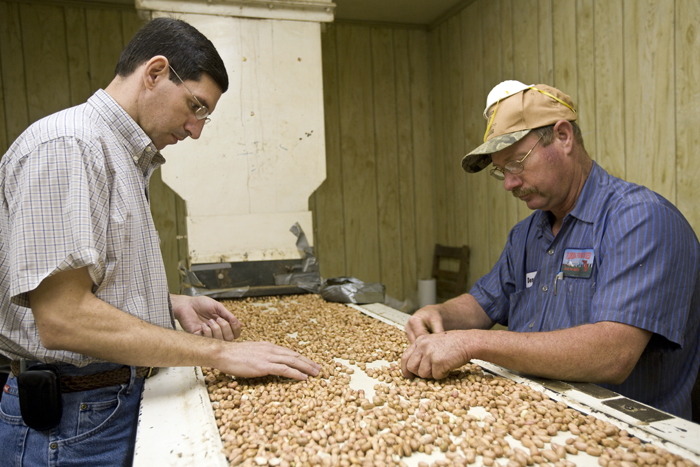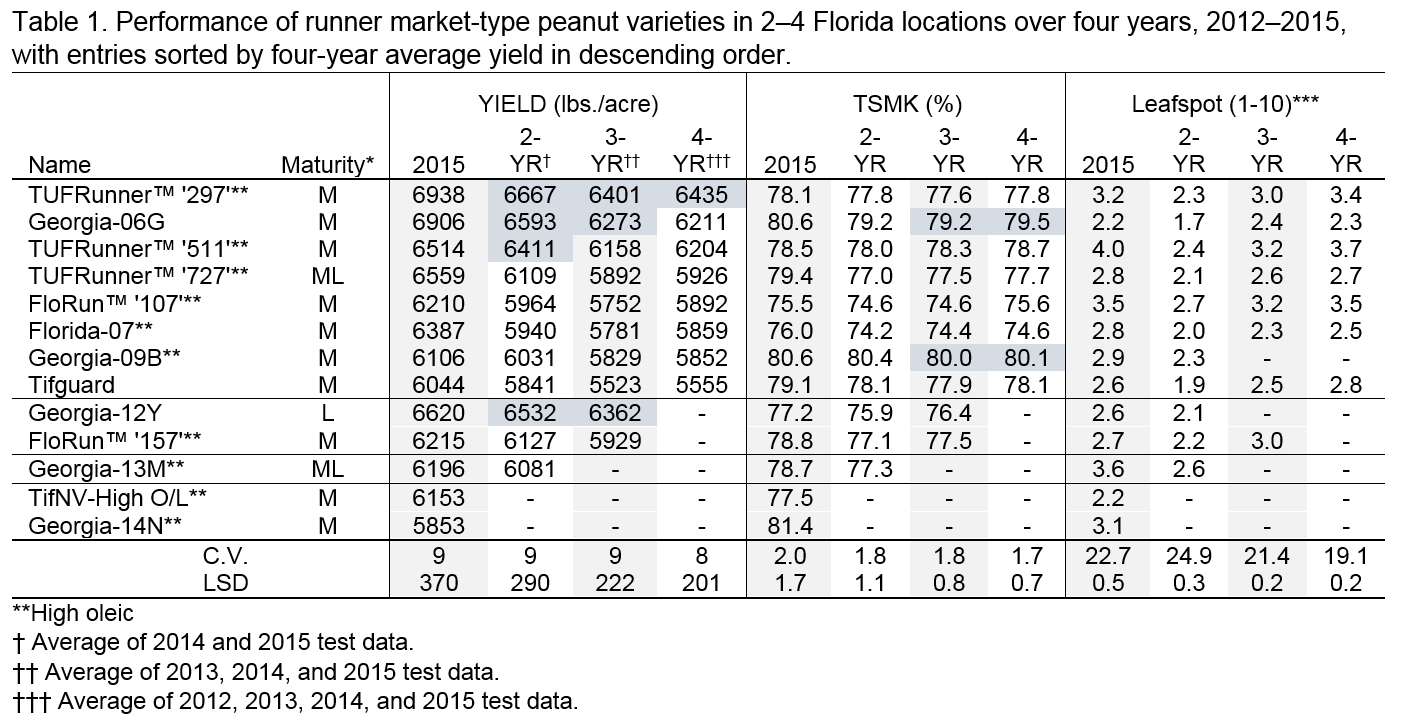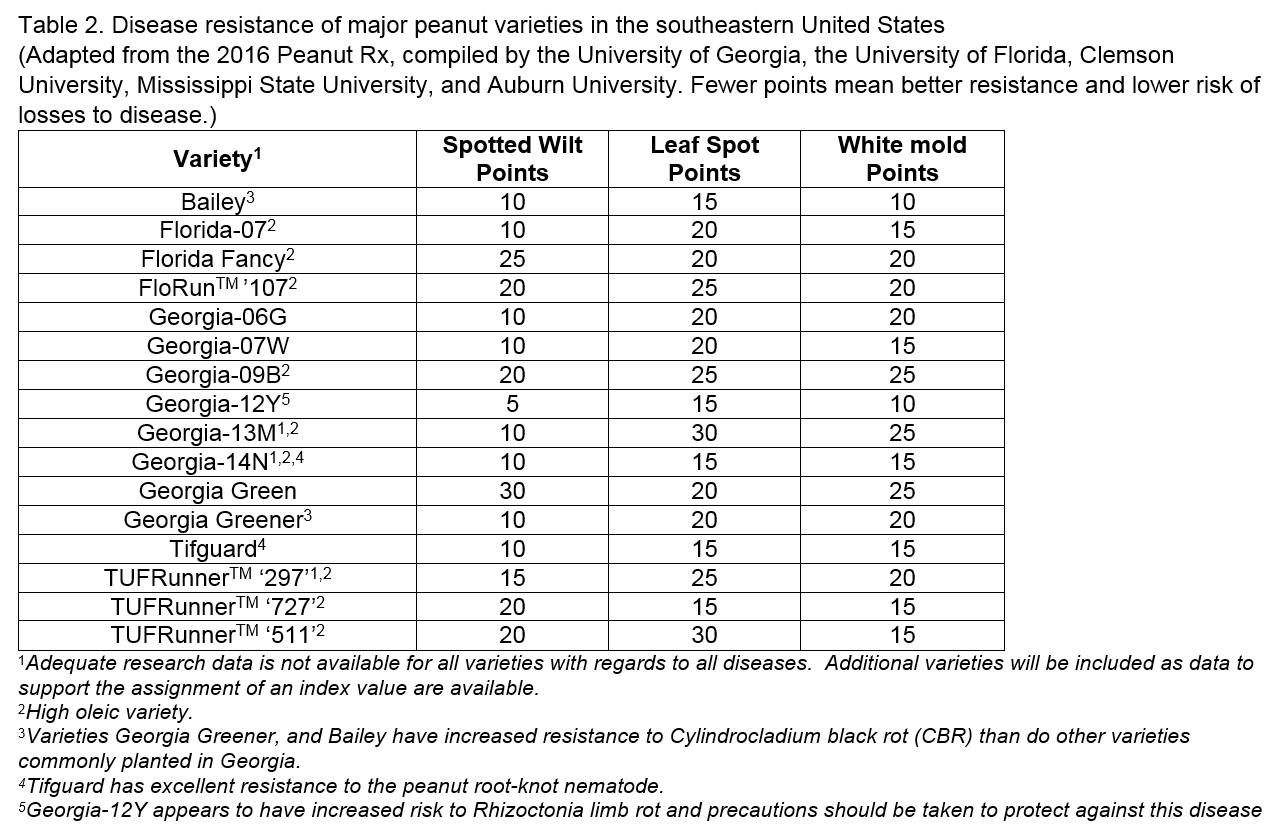
Yield Potential
While the majority of seed for peanut planting this year will be Georiga-06G, there are several varieties in seed increase that farmers should become familiar with. Table 1 shows the performance of peanut varieties in Florida over the past four years in both irrigated and non-irrigated production. Note that in a two year average, TUFRunnerTM ‘297’, Georgia-06G, TUFRunnerTM ‘511’ and Georgia-12Y had similar yields with TUFRunnerTM ‘297’ having the highest four-year average. In addition to yield potential, grade and disease resistance are important factors in cultivar choice. Most varieties grown today have the potential to grade in the mid to high 70 percent range. There are significant differences in disease resistance among modern peanut varieties, and that has implications for potential cost cutting as well as production decisions such as date of planting.

Disease Resistance
Table 2 shows the variety disease risk points from the Peanut Rx for 2016. Lower points for a given disease mean lower risk of losses when planting that variety. Controlling white mold is one of the most expensive and difficult propositions in peanut disease management. Varieties such as Florida-07, Tifguard, Georgia-12Y, Georgia-07W, Georgia-14N, TUFRunnerTM ‘297’, TUFRunnerTM ‘727’, and TUFRunnerTM ‘511’. Tifguard, TUFRunnerTM ‘727’, and Georgia-12Y would be good choices for fields where the risk of white mold is high. High risk situations include shortened rotation and early planting. If early planting is a goal, choosing a variety with low risk to both white mold and spotted wilt is important. Early planting (before May 10) would favor varieties with a higher risk of leaf spot such as Georgia-13M and TUFRunnerTM ‘511’, but increases the risk of spotted wilt. This is because leaf spot risk increases if planting later in the season, around the end of May or early June. It would be important to plant a variety with less risk of leaf spot losses if planting in late May or early June.

 0
0
